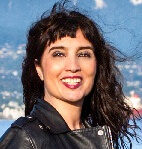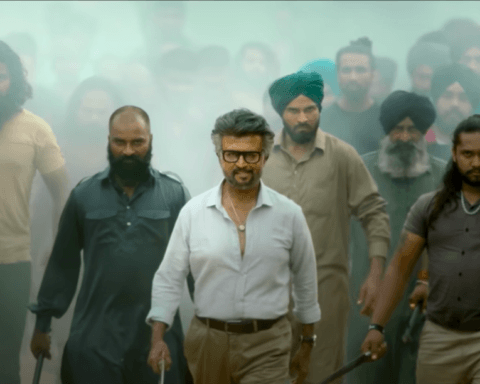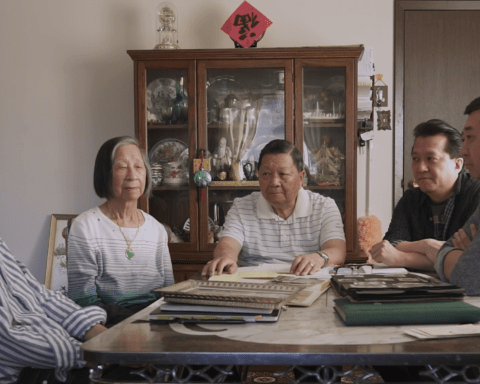As the Academy Award nominations briefly usurp global terror headlines, I recall how watching events unfold in Paris last week was a somewhat cinematic experience.
More often than not, it was a bad B movie. Images of a femme fatale terrorist Hayat Boumeddiene – alternately a Bond girl in bikini turned fantasy villain in niqab and cross bow (cross bow!? really?) – were surreal at best, grotesque at worst.
There were some definite Hollywood moments – including the police stand offs, the hostage taking and even a few unlikely heroes, like the Muslim worker at the kosher deli who saved his fellow citizens by hiding them in a freezer.
It was a thriller of a movie that kept much of the “free world” glued to CNN and culminated with a march that saw world leaders – many of them perpetrators of gross violations of freedom of expression in their own countries – link arms in solidarity with the victims of the attack on Charlie Hebdo.
And it was myopic in the extreme – what about Edward Snowden and Julian Assange, the 17 Palestinian journalists killed by Israeli forces during the attack on Gaza last year that killed over 2,100 people, the Palestinian cartoonist recently released from prison who was critical of both Hamas and Netanyahu, or the journalists locked in Egyptian President Abdel Fattah el-Sisi’s new gulags in Cairo? And what about the hundreds of Iraqi journalists (including cartoonists) murdered since the invasion in 2003 (Iraq has consistently been the most dangerous country for journalist for years), unmourned by the world at large, or their Syrian colleagues caught in a half-decade-long nightmare fuelled by proxy militias funded by international players?
[H]ow was it that the Kouachi brothers just happened to conveniently leave their ID lying around for the police to discover? Or, that they had apparently been on the radar of French intelligence for years?
Of course, we’ve come to accept myopia from Hollywood. But even by the usual standards, there were more than a few cracks in this narrative, not to mention some thin plotlines.
How was it possible that the killers of the cartoonists, the Kouachi brothers – linked to kosher deli hostage taker Amedy Coulibaly by a dodgy video broadcast to the world after the attack – were working in tandem with a rival jihadist group? The Kouachi brothers claimed to represent al-Qaeda in Yemen, while Coulibaly claimed to be with Islamic State (IS) – two factions currently at each other’s throats in Syria.
And how was it that the Kouachi brothers just happened to conveniently leave their ID lying around for the police to discover? Or, that they had apparently been on the radar of French intelligence for years? Or, that police killed them all before due process might determine whom they were working for and why. Or, that the head of the local police investigation happened to kill himself a few days after the attack? It all began to resemble an Islamist version of Three Days of the Condor meets The Battle of Algiers.
Emotional truth in film
My cinematic lens on the scenario can be blamed on the fact that I watched it all unfold whilst attending the Palm Springs International Film Festival, mainly on the flat screen television in my mid-century modernist hotel room deep in the desert. But just as on September 11, 2001, when I found myself in the middle of a cultural festival in Jordan celebrating East meets West (we all carried on, trancelike, with a scheduled performance of Sufi chanting at the Citadel), there was something oddly comforting about sitting in a darkened theatre with strangers watching world cinema.
…After so much of [journalism] has been compromised by official stenography and disinformation campaigns, perhaps the emotional truth of cinema is more reliable.
Discerning what is real and what isn’t used to be a job for journalists. But after so much of that profession has been compromised by official stenography and disinformation campaigns, perhaps the emotional truth of cinema is more reliable.
When I lived in Paris from 1994 to ’96, and wrote about cinema for Sight and Sound magazine, it was the era of cinema de banlieue and of films like Mathieu Kassovitz’s La Haine and Malik Chibane’s Douce France that celebrated suburban anti-heroes, many from immigrant backgrounds, and many of whom were becoming radicalized.
It was also the era of FIS (Islamic Salvation Front), when hundreds of Algerian intellectuals fled death threats from an Islamist group many claim was actually fed by the regime, and faced the same very real racism that 10 per cent of France’s population deals with every day.
Echoes of Ferguson
Selma, which opened the Palm Springs Film Festival and was nominated for Best Picture at the Oscars, with its compelling chronicle of Martin Luther King’s campaign to secure equal voting rights via an epic march from Selma to Montgomery, Alabama in 1965, seemed uncanny in its post Ferguson timing. Particularly with its depiction of the live broadcast of state troopers beating peaceful black protestors as a key turning point in the struggle – a timely reminder of the power of the image.
Dancing Arabs, an Israeli film by Eran Riklis based on two novels by Palestinian writer Sayed Kashua, spoke to the civil rights of Palestinians with Israeli citizenship, some 20 per cent of the population whose struggle resonates in some ways with that of North African youth in France. The film’s protagonist, a young man who must assume the identity of his dying Israeli classmate in order to keep a job and a tenuous place in society, reminded me of the francization of minorities in France and the intolerance of “difference” vs. the more Anglo-Saxon idea of “multiculturalism” (where you have community representatives who keep tabs on people for the authorities, as was explained to me by a young maghrebin organizer in Paris, who kept a low profile to avoid police harassment).
Timbuktu, a sublime piece of cinema about the Islamist take over of Mali in 2012 by Mauritanian director Abderrahmane Sissako – nominated for an Oscar – offered a nuanced, lyrical approach to the whole issue of extremism and intolerance. Through a series of powerful images, ranging from a group of schoolboys playing a phantom game of soccer with no football (banned as “un-Islamic”) to a Malian musician being whipped for her art and singing through her tears, to a former follies bergeres dancer turned local mad woman standing tall and proud in a ragged costume blocking a jeep full of armed men, in gorgeous defiance, the film showed how foreign the jihadi culture is to traditional Malian, Sufi influenced Islam.
Just as foreign as Wahhabist extremism is to kids from French ghettos whose parents emigrated from the Maghreb. Just as foreign as IS is to traditional Iraqi culture: “Who are these people?” an Iraqi friend asked recently, “they don’t even speak Arabic.” And just as foreign as the National Security Agency (NSA) is to the U.S. constitution.
Cry from the heart
In my fantasy Hollywood ending to the march in Paris, all those world leaders linking arms will spend the next several years visiting widows and orphans in Iraq and Syria and Gaza and the dispossessed in inner-city ghettos from Detroit to Marseilles, consoling and offering their heartfelt apologies to the relatives of drone strike victims in Yemen and Pakistan, of journalists murdered in less telegenic climes and the victims of warlordism in Afghanistan and of torture and extraordinary rendition. In my dream, Je Suis Charlie will become a global cri de coeur for actual liberté, egalité and fraternité.
In the meantime, celluloid dreams aside, we still have culture as a form of self-defence, and as a reminder of what’s real. Just as the final image of Timbuktu – a jihadist secretly practising a beautiful, fragile dance of his own creation – suggests: Peut-être je ne suis pas Charlie, mais certainment je suis humaine.
Hadani Ditmars is the author of Dancing in the No-Fly Zone: a Woman’s Journey Through Iraq, a past editor at New Internationalist, and has been reporting from the Middle East for two decades. A fifth generation Canadian of mixed ancestry, she lived in Paris in the 90’s and wrote for Sight and Sound and The Independent. Her next book is a political travelogue of ancient sites in Iraq.




